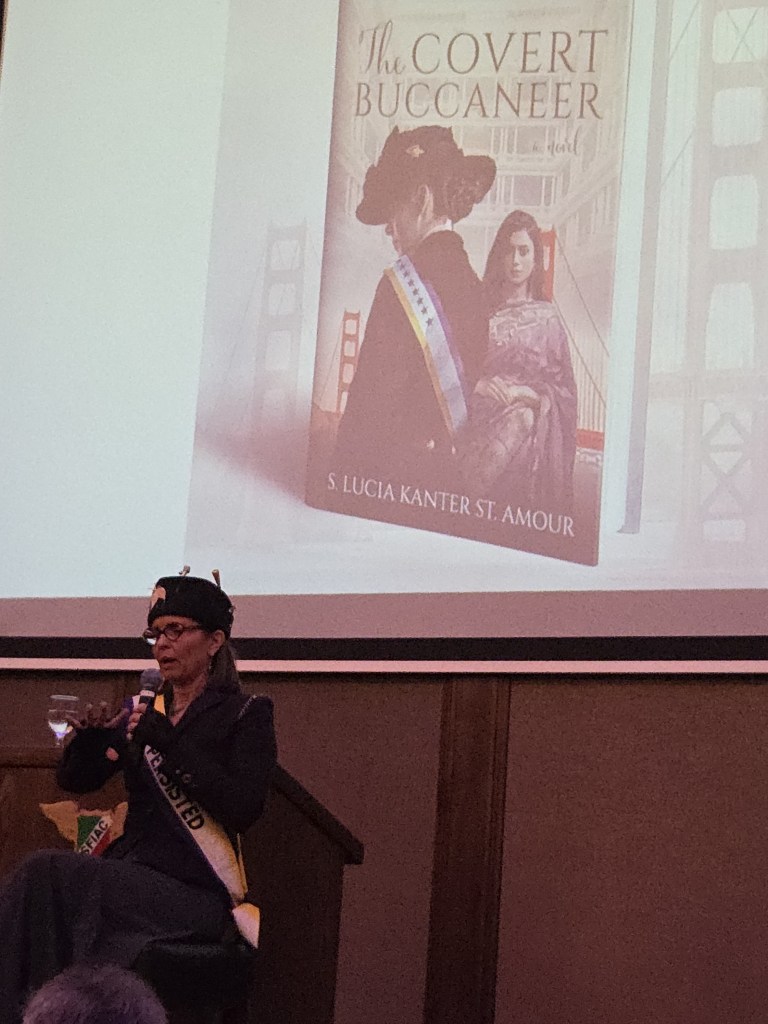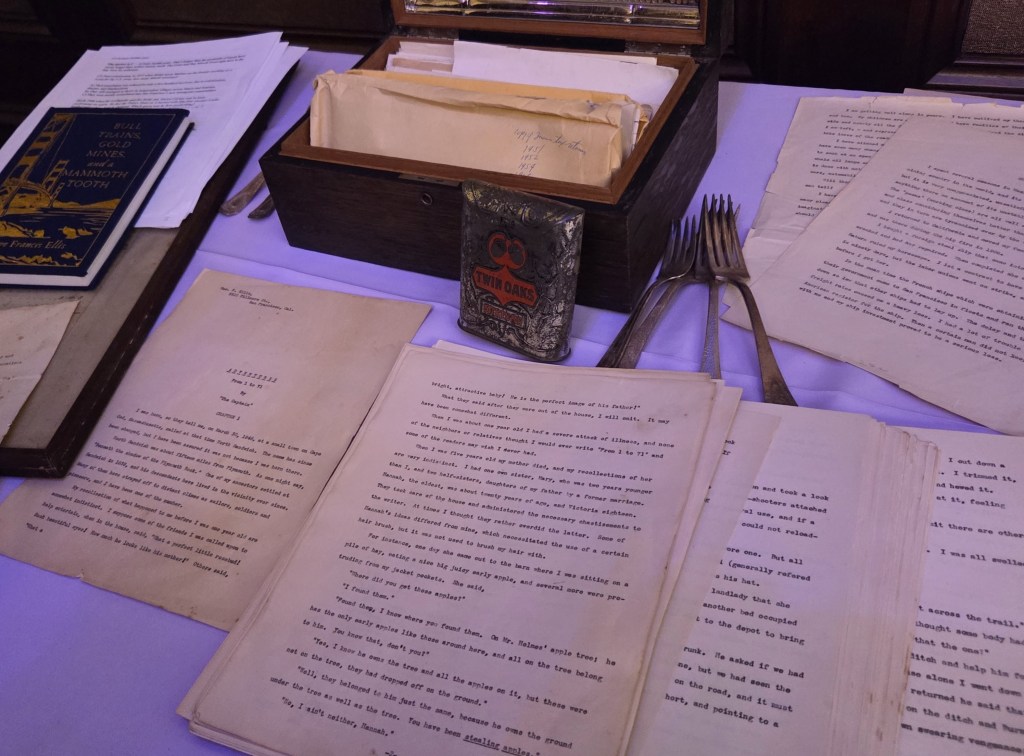San Francisco attorney S. Lucia Kanter St. Amour shared details about her extremely personal debut historical novel at a festive book launch at the San Francisco Italian Athletic Club in North Beach on Wednesday.
Describing the newly released “The Covert Buccaneer” (Pactum Factum Press, 388 pages, Oct. 13, 2025), which is based on a family manuscript she discovered in a trunk, St. Amour said, “It’s a spectacular story, just like ‘The Count of Monte Cristo.’ However, the women are missing. I had to rewrite the book and put the women in.”
 S. Lucia Kanter St. Amour shares information about her personal and highly researched historical novel “The Covert Buccaneer”
S. Lucia Kanter St. Amour shares information about her personal and highly researched historical novel “The Covert Buccaneer”
at the San Francisco Italian Athletic Club. (Leslie Katz/Bay City News)  L-R, Lucia Kanter St. Amour and Christine Pelosi head up a quiz session at the book party for “The Covert Buccaneer” at the San Francisco Italian Athletic Club on Oct. 22. (Leslie Katz/Bay City News)
L-R, Lucia Kanter St. Amour and Christine Pelosi head up a quiz session at the book party for “The Covert Buccaneer” at the San Francisco Italian Athletic Club on Oct. 22. (Leslie Katz/Bay City News)  Pages from the family diary that inspired the novel “The Covert Buccaneer” are on view at the launch for the book in San Francisco on Oct. 22, 2025. (Leslie Katz/Bay City News)
Pages from the family diary that inspired the novel “The Covert Buccaneer” are on view at the launch for the book in San Francisco on Oct. 22, 2025. (Leslie Katz/Bay City News)
San Francisco author, attorney and political strategist Christine Pelosi, who co-hosted the talk, said, “It’s two stories in one.”
Set in two time periods, “The Covert Buccaneer” tells the story of Theodora “Teddy” Ellis, who prospected for gold on the frontier, helped rebuild San Francisco after the 1906 earthquake and fire, and championed women’s rights; and her great-great granddaughter, Georgina “Ellie” Benvenuto, a lawyer and single mother of a child with special needs facing challenges in 2019.
“Ellie is me,” said St. Amour, adding, “The things that happen with Ellie actually happened to me.”
The program also included a quiz about history related to the book, and San Francisco-centric prizes for guests who answered correctly. Among the questions: What opera was Enrico Caruso appearing in when the 1906 earthquake hit? The answer: “Carmen.” Also: True or false: In 1910, a law was passed making it illegal for women to wear hat pins. Answer: False. However, women were required to cover hat pins in public at a time when suffragettes were promoting women’s self-reliance, including using pins as means of protection against unwanted advances.
St. Amour said it took her about a year to write the book, which she hurried to finish so she could share it with her good friend who had a terminal illness. The novel is dedicated to that friend, a “an intrepid fellow buccaneer,” and to “those displaced from their homeland, past and present; the women whose stories are untold; and anyone who doesn’t fit neatly into a category.”

